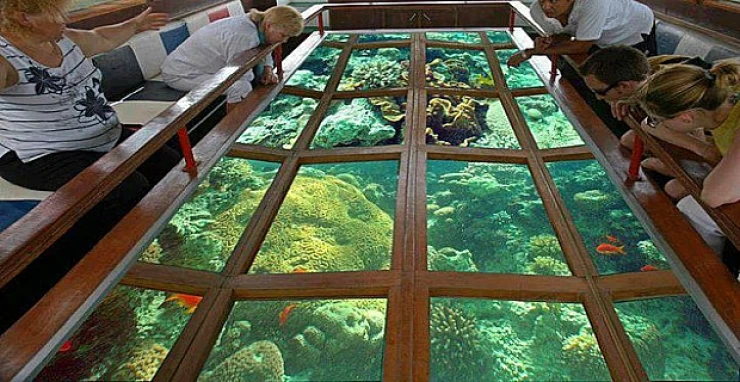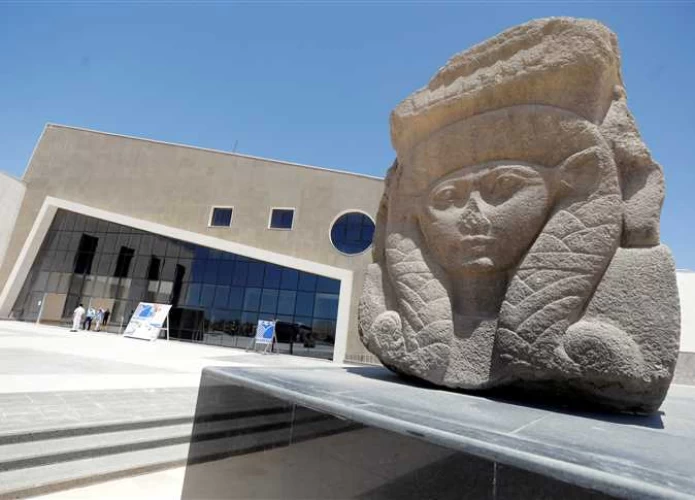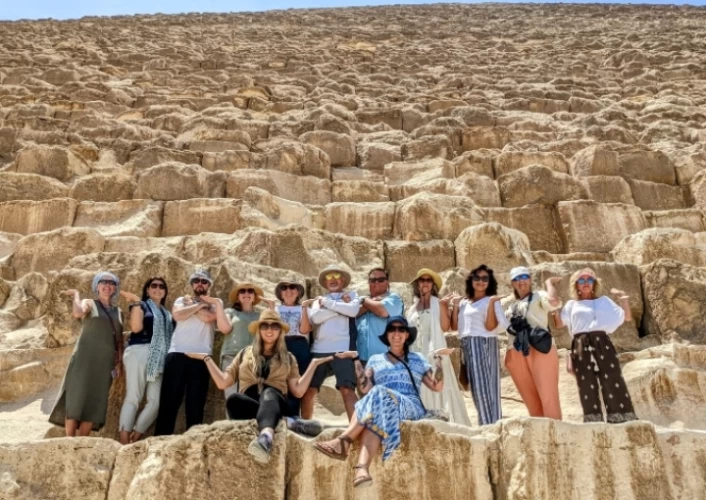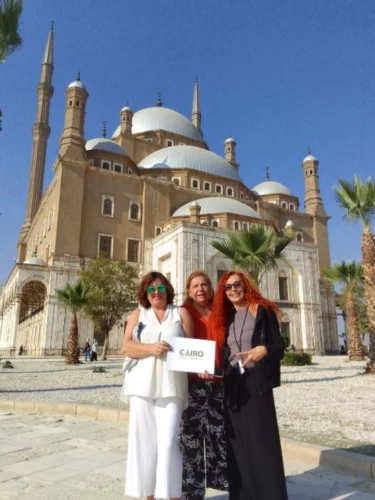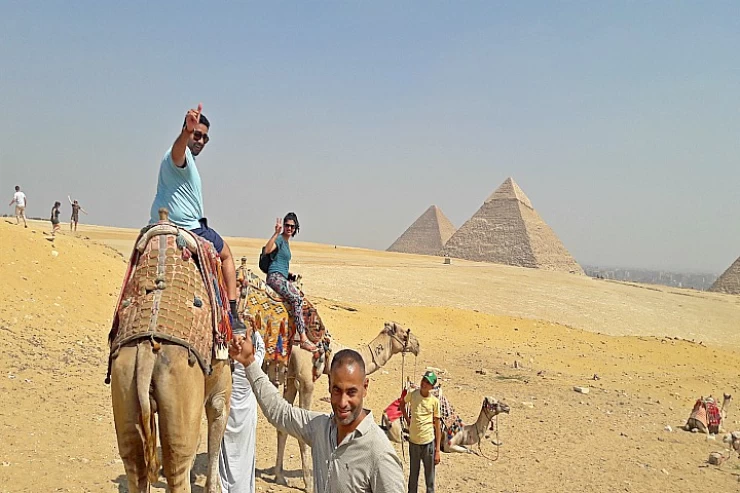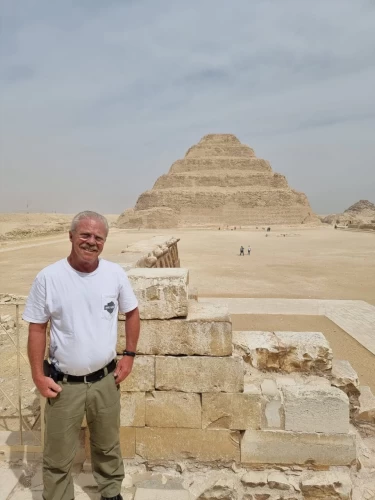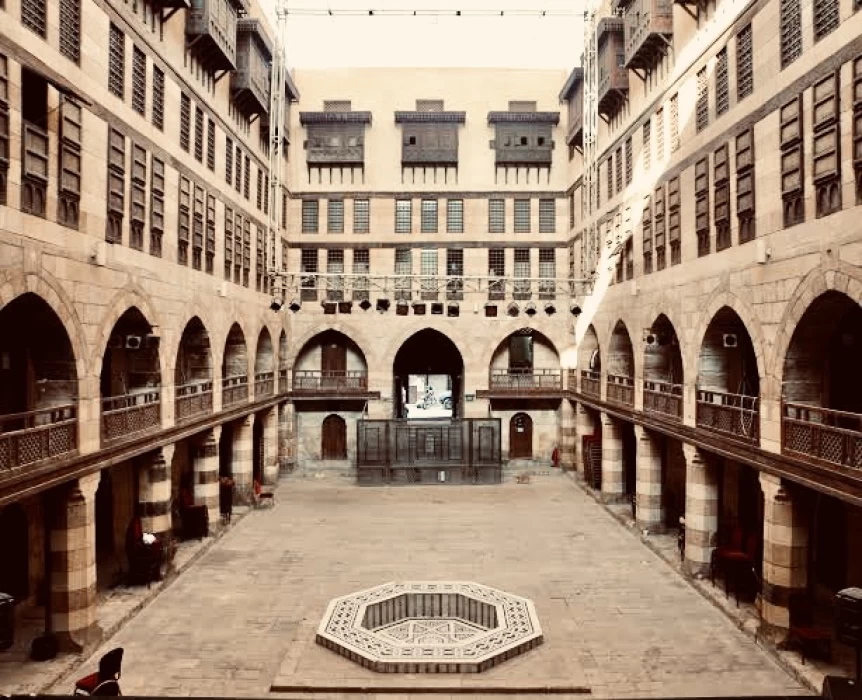
Wekalet Bazaraa
Wekalet "Bazara'a" or "Kikhia" agency is located in the Gamaliya area, on "Timbaksheya" Street in the Al-Azhar district of Cairo. The agency was called the "Kikhia" agency, and it was dedicated to the sale of timber.
It remained under that name until it was purchased by Muhammad "Bazaar", a merchant of Hadhrami origin.
It was named after him and was assigned to the sale of Yemeni coffee and Nabulsi soap. Mohamed Bazaar was the first person to introduce the coffee trade to Egypt in the late 19th century.

Wekalet Bazaraa
Wekalet Bazara'a was transformed into an international center for artisan and traditional crafts and hosted world-class artists in the field to hold workshops with them and learn from their expertise, Financial awards were given for outstanding works in the field of art crafts.
The agency continued to play its role in rooted relations between Egypt and Yemen through the source and goods of Yemen as well as the culture, arts, and traditions of Yemen, although the agency continued to carry the name of "Bazaar" but remained an Arab Islamic monument in Egypt.
It consists of a central open dish surrounded by a walkway to the stores and on top of the agency are lodging rooms, which are also reserved for animal trade caravans, Wekalet Bazaraa was a distinctive monument because it was a residential and commercial complex, a storehouse for goods and caravans coming from Yemen, combining decorations, heritage, rare art, Islamic civilization and aesthetics, and representing historic value.
The agency consists of two parts: the first commercial part includes crops arranged around the courtyard on the ground and first floors, and there are shops overlooking the main facade of the agency on the ground floor.
The second part is a residential suite consisting of two floors above the crops, and each housing unit consists of the first floor with a stair entrance, a reception hall, a small kitchen, a bathroom, and a living room with a height of two floors.
The agency had two entrances: the first was the main entrance that led to the agency’s courtyard, and the second was a private entrance that led to the upper housing units and was not connected to the courtyard.
It ascends directly to the residential floors, and there was a consideration of privacy and the separation of the movement of guests from the movement of commerce.
The two entrances are located on the facade of the North Agency, while the rest of the facades of the other Agency are adjacent to other nearby buildings. The main facade of the agency was characterized by the entrance block, its width was about 5.40 m, and it was crowned by a “semi-circular” motor arch made of stone castes.
The residential parts overlooked the courtyard through window openings that closed on each opening. The windows were made of turned wood, and each Mashrabiya carried a set of wooden cables.
Strong stones were used in building the agency's ground and first floors as load-bearing walls, and the rest of the agency's parts were built of (brick or red brick) and covered with a layer of lime (lime). And it was used in the agency’s facade,
the facade of the ground floor, and the first from the inside, the “famous” color formation, which is the use of yellow and black colors in painting the stone, a type of decoration that was used during the Mamluk era.
These arcades bear square stone pillars that represent the facade of the corridor that precedes the crops in the courtyard on the ground and first floors.
There was a wooden flap in its facade with floral ornaments above the crops of the first floor. The area of the Jamaliah agency was about 2 acres, and the agency had surfaced about 300 meters per surface, and these agencies were filled with goods from coffee and other goods.
The covering of the Kaaba was taken out of the agency and was loaded onto the caravans to leave for the Hejaz.
The Agency's maintenance and restoration work was carried out in March 2002 at a cost of about 5 million pounds and took three years. The maintenance work includes architectural restoration of the walls and walls.
And cleaning all the “Arabesque” wood, including windows and doors, was painted with materials that do not affect its archaeological nature and preserve the wood,
the tiles were changed, and the agency was provided with a high lighting system. It has been transformed into an international center for traditional and artistic crafts.
You can walk around Al-Azhar and visit the Al-Azhar Mosque, one of the most famous ancient mosques in Egypt and the Islamic world.
Latest Articles
Admin
Seabourn Sojourn Cruise Stops in Safaga Port
The Seabourn Sojourn, the flagship vessel of Seabourn Cruise Line's ultra-luxury fleet, was built in 2008 at the T. Mariotti shipyard in Genoa, Italy. Measuring 198 metres, it can accommodate up to 450 guests in its 225 spacious all-suite staterooms.
Admin
Norwegian Sky Cruise Stops in Safaga Port
Norwegian Cruise Line operates a cruise ship called the Norwegian Sky. It was constructed in 1999 and can accommodate 2,004 passengers in addition to 878 crew members. The ship has several dining establishments, lounges and bars, a spa and fitness center, swimming pools, and a number of entertainment areas.
Admin
Explora II Cruise Stops in Safaga Port
Explora II, the second vessel in the Explora Journeys fleet, sets sail in 2024 to redefine luxury cruising. With 461 ocean-front suites, 9 culinary experiences, and 4 pools, this haven of sophistication and sustainability promises an unforgettable "Ocean State of Mind" journey to inspiring destinations.
Admin
Mein Schiff 6 Cruise Stops in Safaga Port
The Mein Schiff 6 is the latest cruise ship in the renowned TUI Cruises fleet, offering passengers a luxurious and sophisticated cruise experience. At 315 metres long, this floating resort features a range of dining options, entertainment, and recreational facilities, including a spa, fitness centre, and sports amenities.
Admin
Mein Schiff 4 Cruise Stops in Safaga Port
When the Mein Schiff 4 cruise ship docks in Safaga, Egypt, passengers are granted access to a realm of ancient wonders. Aboard this state-of-the-art vessel, guests can embark on meticulously curated shore excursions that showcase the region's most iconic landmarks, including the Giza Pyramids, the enigmatic Sphinx, and the remarkable tombs and temples of the Valley of the Kings in Luxor.
Admin
MS Europa Cruise Stops in Safaga Port
The Silver Moon, Silversea's latest flagship, is a luxury cruise ship that offers an exceptional travel experience for Venezuelans exploring Egypt. With a capacity of 596 guests and an impressive 40,700 gross tonnes, the Silver Moon maintains the small-ship intimacy and spacious all-suite accommodations that are the hallmarks of the Silversea brand.






